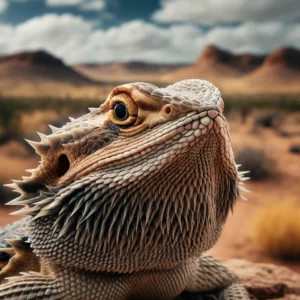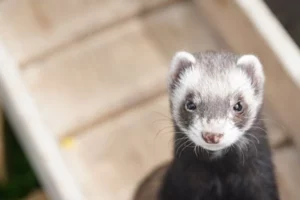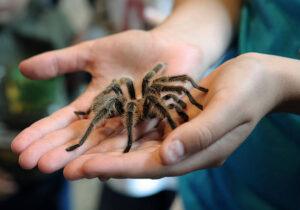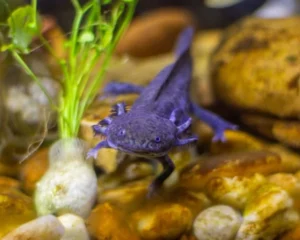When you hear ‘pet,’ you’re likely to think of cats purring on windowsills or dogs eagerly awaiting their next game of fetch. But for some, the usual furry companions just don’t cut it. That’s where exotic pets come in. Now, I’m going to take you through what makes a pet ‘exotic’. Essentially, these are animals not typically domesticated, often hailing from distant corners of the globe. They’re not your standard pet shop fare and can range from reptiles like snakes and lizards to birds like parrots and mynahs, and even larger mammals like fennec foxes or capybaras.
This isn’t just about the novelty, it’s also about the draw of the unknown that pulls people toward these unique creatures. Imagine having a piece of the jungle or the savannah right in your living room – that’s a fascinating thought, isn’t it? People often seek exotic pets for the allure of owning something rare or for the prestige it might confer. It’s a chance to connect on a unique level with the animal kingdom, transcending traditional pet ownership.
In the homes across America, there’s a surprising diversity of exotic pets. It’s not uncommon to encounter anything from slippery salamanders to majestic bald eagles knowingly turning heads. It’s about the curiosity and the appeal of building a bond with an animal that few others can claim to know. But with great uniqueness comes great responsibility. Exotic pets often require specific environments, diets, and care that replicate their natural habitats as closely as possible.
Caring for these animals is a commitment to embracing the unfamiliar and accepting the challenges that come with it. It’s a journey not to be taken lightly, yet for those who are up to the challenge, it’s incredibly rewarding. And this sparks a conversation we’re going to dive into next: just what kinds of exotic pets are making themselves at home in America? The answer might surprise you, as we move from defining exotic pets to exploring their fascinating realm.
From the Wild to the Living Room: Popular Exotic Pets in America:
Exotic pets can add a unique flair to pet ownership with their unusual characteristics and behaviors. In America, there’s a wide variety of exotic animals that people keep as pets, ranging from small, manageable creatures to more demanding species. Here are some of the top exotic pets in the United States:
1. **Bearded Dragons**: These reptiles are popular due to their docile nature and manageable size. They require a carefully controlled environment with proper heat and light but are generally easy to care for.

2. **Hedgehogs**: Known for their cute appearance and curious behaviors, hedgehogs are nocturnal animals that are relatively low-maintenance but do require specific care to manage their health needs.

3. **Sugar Gliders**: These small, nocturnal marsupials from Australia are known for their ability to “glide” through the air. They are social animals that require a lot of interaction and a specific diet.

4. **Ferrets**: Although not as uncommon as other exotic pets, ferrets are energetic and playful animals that bond well with their owners. They need a spacious cage and plenty of playtimes outside of it.

5. **Tarantulas**: For those not squeamish about spiders, tarantulas are a fascinating pet choice. They require minimal space and are generally low maintenance, though their dietary and environmental needs must be met precisely.

6. **Chameleons**: Famous for their ability to change color and unique eyes, chameleons are a visually striking choice for a pet. They need a carefully controlled environment with the correct humidity and temperature.

7. **Savannah Cats**: These are hybrid cats that are bred by crossing a domestic cat with an African serval. Savannah cats are known for their dog-like loyalty and impressive leaping abilities.

8. **Macaws**: These large, colorful parrots are highly intelligent and can mimic human speech. Macaws require a lot of attention, social interaction, and space to thrive.

9. **Axolotls**: Also known as Mexican walking fish, axolotls are unique in that they retain their larval features throughout their life. They are aquatic creatures that require a tank set-up similar to that of fish but with specific requirements related to water quality and temperature.

10. **Kinkajous**: These rainforest mammals are known for their playful and sweet nature. They are nocturnal and require a diet primarily composed of fruit, which can make them challenging to care for properly.

Each of these exotic pets comes with specific care requirements, and potential owners should thoroughly research and prepare to meet their needs. Additionally, it’s important to check local laws and regulations as some exotic pets may be restricted or illegal to keep in certain areas.
Navigating the Law: Exotic Pets and Legal Boundaries:
You might be surprised to learn that owning a Bengal tiger isn’t as straightforward as adopting a tabby cat from your local shelter. There’s a complex web of laws that you’ll need to navigate. First up, let’s talk about which exotic pets are actually illegal. Some animals are barred from being kept as pets because of the dangers they pose or their conservation status. For example, it’s illegal to own certain types of big cats, primates, and large reptiles in many states.
The legal landscape can vary wildly, with some states having strict regulations while others have a more laissez-faire approach. You’ve got federal laws like the Endangered Species Act and international agreements, like the Convention on International Trade in Endangered Species (CITES), to contend with as well. And that’s not even touching on county or city laws that might be in play.
The hazards these prohibited pets can create aren’t just tales spun for sensational news stories; they’re backed by very real statistics. Large exotic pets can be unpredictable and capable of inflicting serious harm. The laws are there to protect you, the wider community, and the animals themselves from the risks involved.
For those considering the path of exotic pet ownership, understanding and complying with these regulations is absolutely critical. To get you started, I recommend reaching out to local wildlife agencies or specialized legal counsel. They can provide advice specific to your situation and help ensure you’re not inadvertently breaking the law.
And legality isn’t the only consideration when thinking about the welfare of these animals. The ethics of owning exotic pets often come into question. It’s pivotal to ask yourself if your home can replicate the animal’s natural habitat and if you can meet their physical and psychological needs. After all, being responsible for an exotic pet is about more than just following the law. It’s about respecting the intrinsic value of wildlife and honoring their right to a life that’s as close to their natural existence as possible.
Tracking Their Journey: The Path of Exotic Pets to U.S. Homes:
I’m here to help you understand the complex process that brings exotic pets into American living rooms. It isn’t just a matter of placing an order and waiting for delivery; there’s a whole international trade system in place that can be both fascinating and troubling.
When we talk about the international trade of exotic pets, we’re peeking into a massive industry that seriously affects species conservation. Many of these animals are taken from their natural habitats, which can have harmful consequences for both the species and their ecosystems.
Ensuring the welfare of these animals during transport is a major concern. It’s a sad truth that not all exotic pets arrive in their new homes in good health. Stress, injury, and even death are common among animals that travel long distances under less-than-ideal conditions.
And let’s not forget about the ethical side of things. The exotic pet trade is riddled with moral questions. Is it right to keep a wild animal as a pet? What are the implications for the species’ future?
There’s an intricate tapestry of regulations aimed at providing humane treatment for these animals, from CITES (Convention on International Trade in Endangered Species) to local laws. But I’m going to level with you: loopholes exist, and enforcement can be a challenge, leading to a black market that’s hard to crack down on.
When Wild Instincts Surface: The Reality of Exotic Pets and Owner Safety:
I’m going to cut to the chase here. Owning an exotic pet isn’t always a walk in the park. In fact, their unpredictable nature is something you have to be constantly aware of. It’s not just about the cool factor; it’s also about understanding that, at their core, many of these animals are still wild.
You’re going to find out about some harsh realities. For starters, how many exotic pets attack their owners? It’s more than you might think. Attacks by exotic pets, while not everyday news, do happen, and the consequences can range from minor injuries to life-threatening situations.
It’s important to not dismiss these stats as merely scare tactics. They’re genuine concerns that speak to the heart of responsible pet ownership. I’ve read some harrowing stories of close encounters, and believe me, they’re eye-openers. It’s pivotal to be prepared and aware of the inherent risks involved.
Now, I’m not saying that you can’t have a solid relationship with an exotic pet. Many people do. But it’s all about respect ― respecting the animal’s natural behaviors and acknowledging that you cannot completely domesticate the wild out of them.
Choose to be proactive about safety. Seek out knowledge and training specific to the type of exotic pet you have, and always have a contingency plan. Your first attempt at handling your pet doesn’t need to be your last; every interaction is a learning opportunity.
Remember, being informed goes hand in hand with being safe. So, if you’re considering an exotic pet, or already share your home with one, always prioritize your safety and the animal’s welfare. After all, a respectful and understanding approach to these magnificent creatures is the key to a harmonious coexistence.
